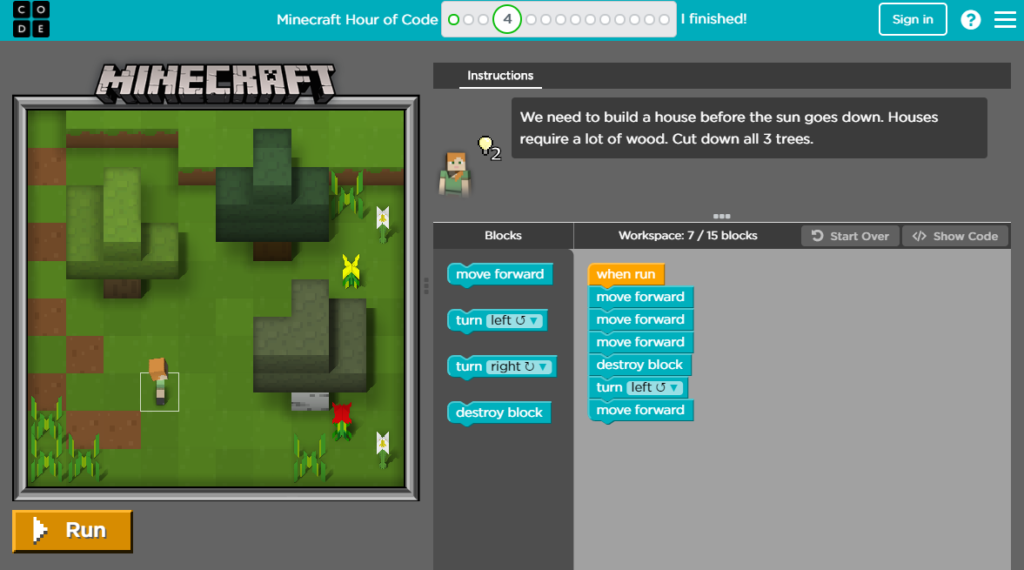
By Tarmo Toikkanen
Educational psychologist, researcher, publisherTo keep school education relevant and motivating for students, learning goals should be in keeping with real life. When it comes to teaching coding, we see too many “piggy trains” where a student simply plays a game and follows instructions. Instead, good instruction in coding should align with a student’s interests and real-life situations.
💻 Piggy trains: no learning, just clicking through
Coding in schools is a much discussed topic. There are countless companies and initiatives out there from physical robotics kits to web-based programming learning environments. Many of them take an easy way by offering web-based sequential games that students play on their own.

We call these learning environments “piggy trains”. Students keep clicking through to the next exercise according to the given instructions. There is little room for creativity and self-expression. These coding games are entertaining, and they enable learners to practice coding commands and structures. However, the learning outcomes are limited.
Hour of Code is a popular and quality example of an online coding game. Students learn to build command sequences and create loops with Minecraft or Angry Birds characters.

Students become familiar with command sequences, loops and conditionals in the problem solving exercises of Hour of Code.
🎲 Solution? Project-based learning
To really learn coding, students must create their own code. Programming is a form of art, just like music. To really learn, students must build their own creation. Of course, the teacher can guide the work but the student must be given a chance to make independent decisions about their own project: what to build and how.
At its best, coding is a general purpose learning tool in addition to reading, writing, calculation, and drawing. Coding projects are an excellent way to practice future skills: creativity, critical thinking, communication and collaboration.
Key topics: coding, coding for children, digital skills, digital skills in schools, teaching digital skills, teacher education, school programmes, coding classes in schools, programming classes in schools, robotics classes in schools, AI in schools, computer science.
📈 Develop project learning at your school!
Start with filling in a free Gap Analysis
A Gap Analysis is a set of questions about your school: where your instruction in digital skills is at the moment, and what your vision is.
Our pedagogical team will analyse your answers and send you a Development Plan – a summary of your current situation and how Teachease can help you achieve your vision.
Read more about Teachease and Gap Analysis: About Teachease